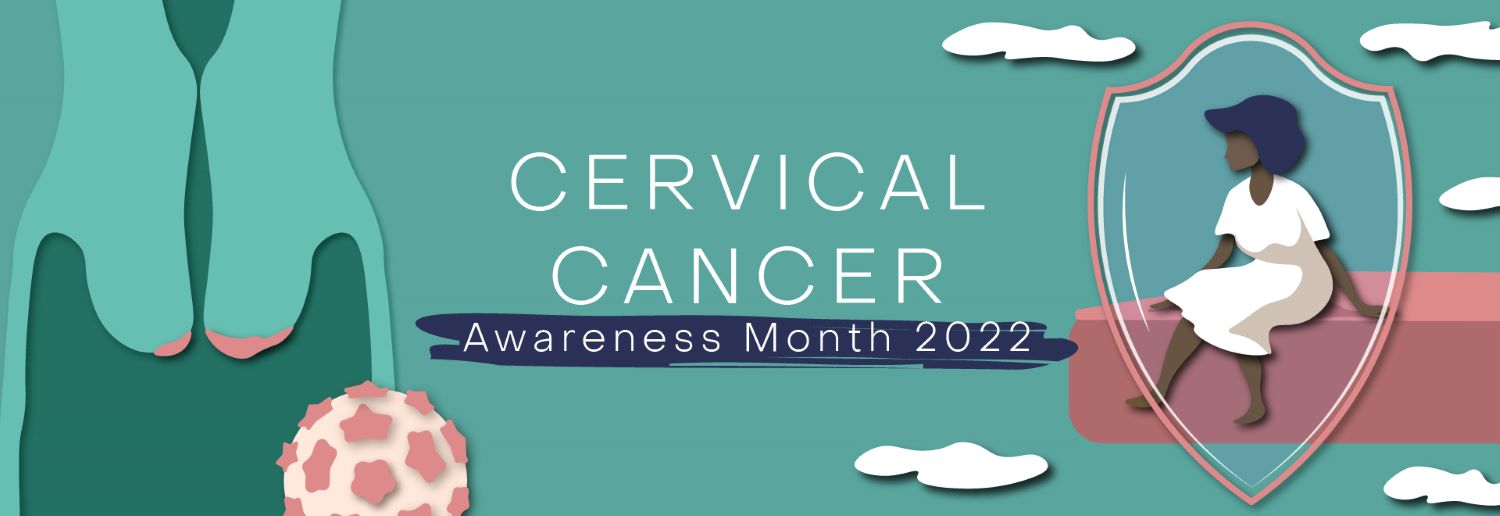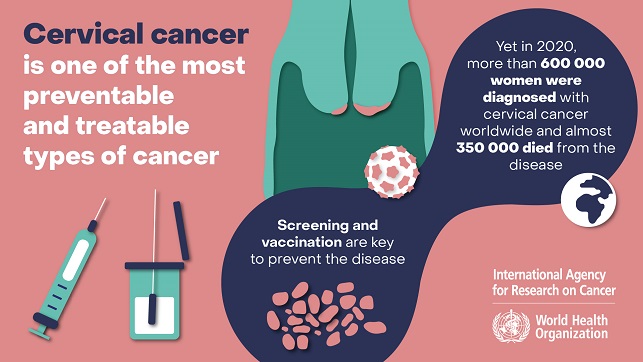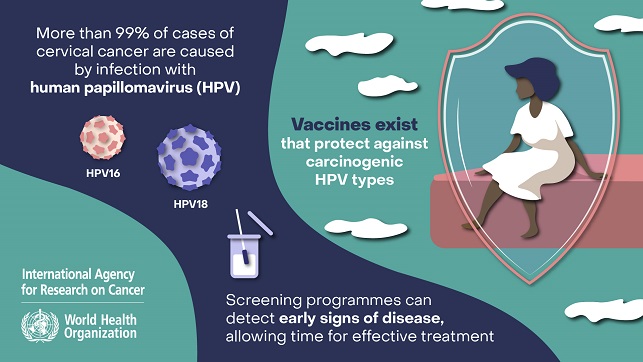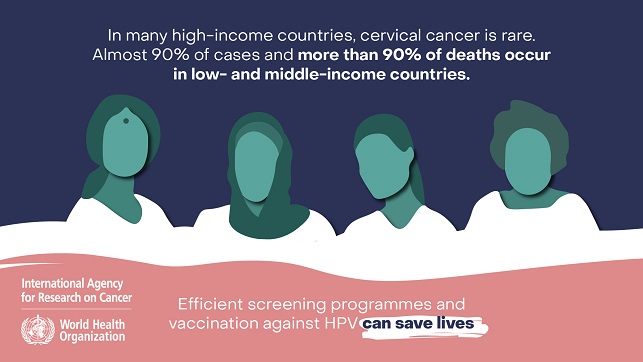
In 2020, an estimated 604 000 women were diagnosed with cervical cancer worldwide and about 342 000 women died from the disease. The main cause of cervical cancer is persistent infection with high-risk types of human papillomavirus (HPV), an extremely common family of viruses that are transmitted through sexual contact. Vaccines exist that protect against high-risk HPV types, and screening programmes can detect signs of disease at an early stage, allowing for effective treatment and management of the condition. This means that cervical cancer should be one of the most preventable and treatable forms of cancer. In many high-income countries, this is the case. High incidence rates and high mortality rates of cervical cancer occur mainly (~90% for both) in low- and middle-income countries.
At the World Health Assembly in May 2018, Dr Tedros Adhanom Ghebreyesus, Director-General of the World Health Organization (WHO), made a global call for action towards the elimination of cervical cancer. As a result, in November 2020, WHO formally launched the Global Strategy to Accelerate the Elimination of Cervical Cancer. The International Agency for Research on Cancer (IARC) is supporting this WHO initiative by providing key evidence, technical materials, and updates for policy-makers, programme managers, and experts implementing the strategy.
IARC has been at the forefront of research to establish the causal role of infection with oncogenic HPV types in cervical cancer development, to evaluate the safety and efficacy of HPV vaccines, and to identify simplified alternatives for screening in low- and middle-income countries. As one element of this research, IARC has contributed to updated WHO guidance for the screening and treatment of cervical precancerous lesions, best practices, and implementation of national programmes. These guidelines include recommendations for the general population as well as for women living with HIV/AIDS.
The new guidelines from WHO are based in part on evaluations of the effectiveness of various methods for cervical cancer screening, performed by a Working Group of international experts convened by IARC to prepare the forthcoming IARC Handbooks of Cancer Prevention Volume 18 on Cervical Cancer Screening.
To eliminate cervical cancer as a public health problem, all countries must reach and maintain an incidence rate of fewer than 4 new cases of cervical cancer per 100 000 women per year. Achieving that goal rests on three key pillars and their corresponding targets:
- Vaccination: 90% of girls fully vaccinated with the HPV vaccine by the age of 15 years;
- Screening: 70% of women screened using a high-performance test by the age of 35 years, and again by the age of 45 years;
- Treatment: 90% of women with precancer treated and 90% of women with invasive cancer managed.
Each country should meet the 90–70–90 targets by 2030 to get on the path towards eliminating cervical cancer by the end of this century.
IARC ProjectsIARC RESEARCH PROJECTS RELATED TO CERVICAL CANCER
Cervical cancer screening and HPV testing in Latin America
Read more
Demonstrating a new method to prevent cervical cancer in Zambia
Read more
Towards cervical cancer elimination through HPV vaccination in Bhutan
Read more
Videos
Cervical cancer screening and HPV testing in Latin America
Demonstrating a new method to prevent cervical cancer in Zambia
Dr Iacopo Baussano on the effectiveness of a vaccination programme against HPV in Bhutan
Social Media Tiles
Social Medial Tiles – Cervical Cancer Awareness Month 2022



